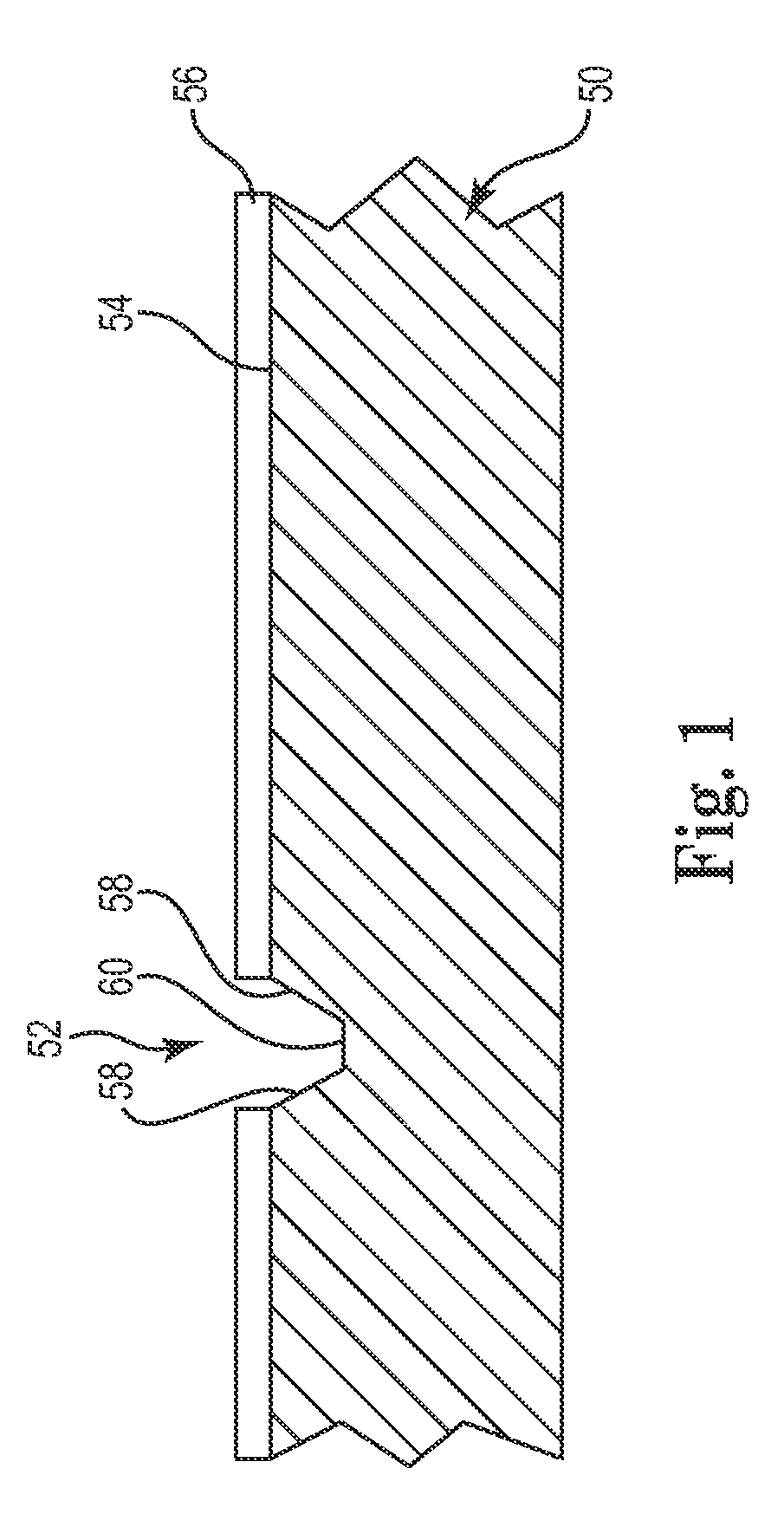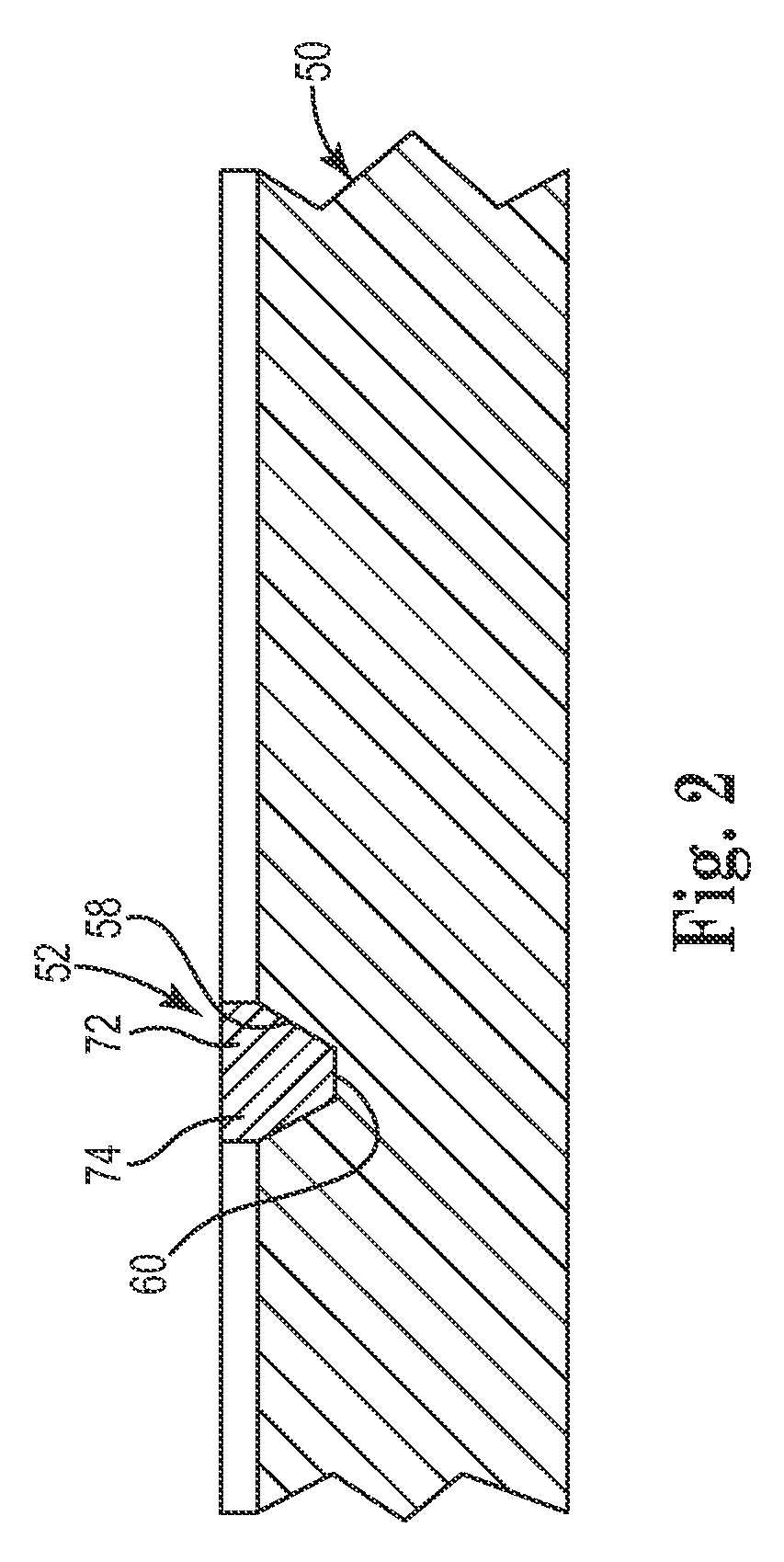Method of making a compliant printed circuit peripheral lead semiconductor test socket
a technology of printed circuits and semiconductors, applied in the direction of conductive pattern formation, electrical apparatus construction details, instruments, etc., can solve the problems of reducing affecting the performance of the circuit board, and all have a limited mechanical life range, etc., to achieve excellent electrical performance, reduce the cost of production, and reduce the effect of contact loss
- Summary
- Abstract
- Description
- Claims
- Application Information
AI Technical Summary
Benefits of technology
Problems solved by technology
Method used
Image
Examples
Embodiment Construction
[0038]The present test sockets can be used to test semiconductor and other electrical devices having contact-to-contact spacing (pitch) on the order of less than about 1.0 millimeter (1×10−3 meter), and more preferably a pitch of less than about 0.7 millimeter, and most preferably a pitch of less than about 0.4 millimeter. Such fine pitch test sockets are especially useful for evaluating IC devices.
[0039]FIG. 1 is a side cross-sectional view of a fixture 50 useful in making a test socket in accordance with an embodiment of the present disclosure. The fixture 50 can include a plurality of cavities 52 (or recesses) in the first surface 54. The locations of the cavities 52 are arranged in an array that corresponds to terminals 62 on an IC device 64 (see FIG. 6). The cavities 52 can be formed using any of a variety of techniques, including but not limited to molding, machining, printing, imprinting, embossing, etching, coining, and the like.
[0040]In the illustrated embodiment, the cavit...
PUM
| Property | Measurement | Unit |
|---|---|---|
| width | aaaaa | aaaaa |
| aspect ratio | aaaaa | aaaaa |
| conductive | aaaaa | aaaaa |
Abstract
Description
Claims
Application Information
 Login to View More
Login to View More - R&D
- Intellectual Property
- Life Sciences
- Materials
- Tech Scout
- Unparalleled Data Quality
- Higher Quality Content
- 60% Fewer Hallucinations
Browse by: Latest US Patents, China's latest patents, Technical Efficacy Thesaurus, Application Domain, Technology Topic, Popular Technical Reports.
© 2025 PatSnap. All rights reserved.Legal|Privacy policy|Modern Slavery Act Transparency Statement|Sitemap|About US| Contact US: help@patsnap.com



